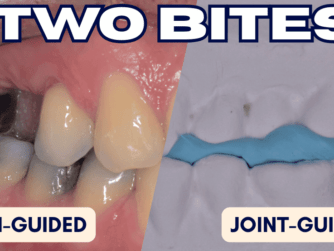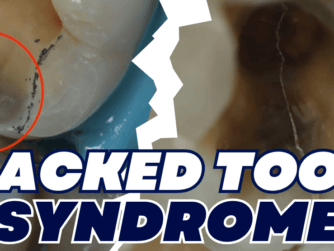Podcast: Play in new window | Download (Duration: 55:49 — 79.2MB)
Subscribe: RSS
Surely injection moulding composite resin is too ambitious to restore Toothwear? Well, let Dr Kostas convince you otherwise! Restorative Dentist Dr Kostas Karagiannopoulos will reveal all the the nitty gritty secrets from patient evaluation to the entire bonding protocol.
Protrusive Dental Pearl: How to improve the resistance form of ceramic onlays: Use a big fat round bur, sink it into your composite core (be sure you’re drilling into core material and not sacrificing healthy tooth structure) and allow your ceramic to extend into that to help your onlays stay on when you’re trying them in.

Step by Step PDF Infographic. Click here
In this episode we discussed:
- Role of injectable composites as a transition (and as a long term solution) (12:59)
- Follow-ups and maintenance of injection molded composites (16:52)
- Contraindication for injection molding (20:28)
- Indication for injection molding (20:54)
- Minimizing voids when restoring with injection moulded composites (21:48)
- Filling the stent with composite (a thing of beauty!) (28:17)
- Other techniques vs Injection molding (31:29)
- Injection molding composite case sequence (35:04)
- Isolation during injection molding? (46:36)
If you enjoyed this episode, check out eMax Onlays and Vertipreps
Want to learn more? Do check out this one-day course by Dr Kostas with GC UK









[…] If you enjoyed this episode, check out How to use Injectable Composites to Treat Toothwear […]